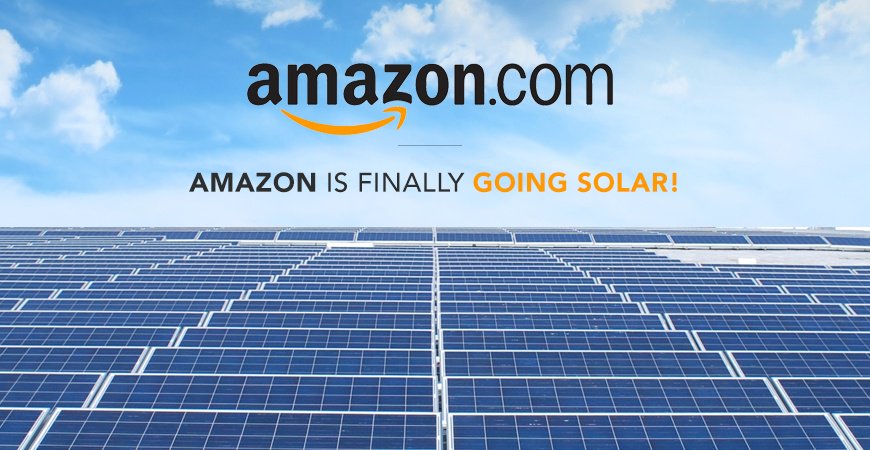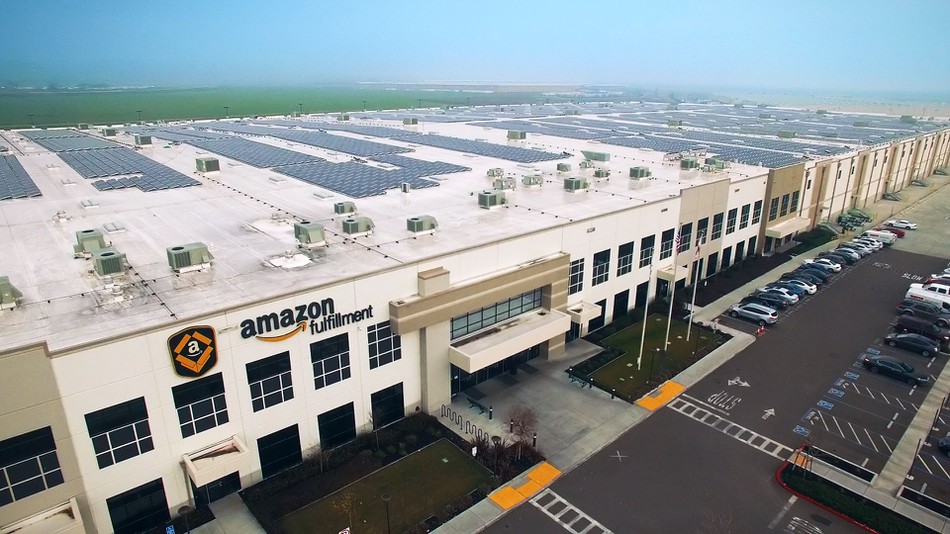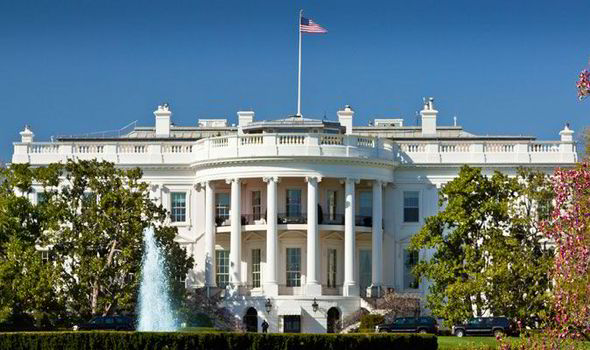
Back in 2015, Greenpeace did a sophisticated research project on the sustainability of the top tech giants in the United States. It covered many areas of sustainability, and many of these companies earned A’s on easy fixes like recycling and green spaces. However, most of them received poor grades – D’s and many F’s – on renewable electricity generation. Amazon was one of the biggest failures in the report, with 0% of their energy load being supplied by direct renewable energy generation either onsite or purchased through Direct Access. After this public shaming by Greenpeace, it looks like Amazon has turned things around.
Keeping Pace With The Other Corporate Giants
After the renewable energy report released by Greenpeace, Amazon knew they could no longer be drastically behind Target, Walmart, and Apple. They had to get their clean energy act together, which is exactly what they did. In 2016, as a corporation, Amazon was the largest  buyer of clean energy (solar, wind, etc.). With 2016’s massive purchase of renewable energy, Amazon will finally break the top 10 of corporate users of renewable energy; they will come in around spot 7-8 while rival companies Target and Wal-Mart place 1 and 2 respectively.
buyer of clean energy (solar, wind, etc.). With 2016’s massive purchase of renewable energy, Amazon will finally break the top 10 of corporate users of renewable energy; they will come in around spot 7-8 while rival companies Target and Wal-Mart place 1 and 2 respectively.
Amazon’s Plan For Solar Energy
Amazon has said that their end goal is for all their warehouses’ battery storage incorporation) and distributions centers to be 100% energy dependent (which will require incorporation) – but they need to start somewhere. That somewhere is their fulfillment center in Patterson,
California. Amazon is expected to cover 75% of the 1.1 million square foot roof of this facility with solar panels. The goal of this solar deployment is to provide enough energy to power all robotics in the center. And after Patterson? Amazon has the same plans for its warehouses in:
- New Jersey
- Maryland
- Nevada
- Delaware
While the majority of the clean energy mix for these facilities is expected to be derived from solar, it is expected that nearly 80% of the energy supplied to these facilities will be renewable. In total, Amazon plans to install 41 MW of solar which is energy to power roughly 7,000 homes!
Amazon Is Also Looking To Create Solar Jobs
Many people are already aware of Amazon’s Career Choice program. This is Amazon’s program to encourage its employees to further their education and obtain advanced degrees or certifications. Amazon pays for textbooks and tuitions in fields such as:
- Aircraft mechanics
- Computer design
- Machine tool technologies
- Medical lab technologies
- Nursing
- And other fields in high-demand
2016 saw a 25% increase in solar jobs and Amazon wants to take advantage. So, now we can add one more to the list. Amazon will now pay the tuition of their warehouse employees if they want to become PV (solar) installers. Amazon decided to include tuition for associates to obtain North American Board of Certified Energy Practitioners (NABCEP) certifications. Why? Amazon hopes that when the time comes, their own warehouse employees will be able to install solar panels on their fulfillment centers. Talk about a win-win!
Clearly, Amazon is making a very strong push to become a corporate leader in sustainability. If you want to see another corporation write up, just list the company in the comments and I will get started on the next post!
Want to read more industry trends or have solar questions answered? Subscribe to our blog here!



